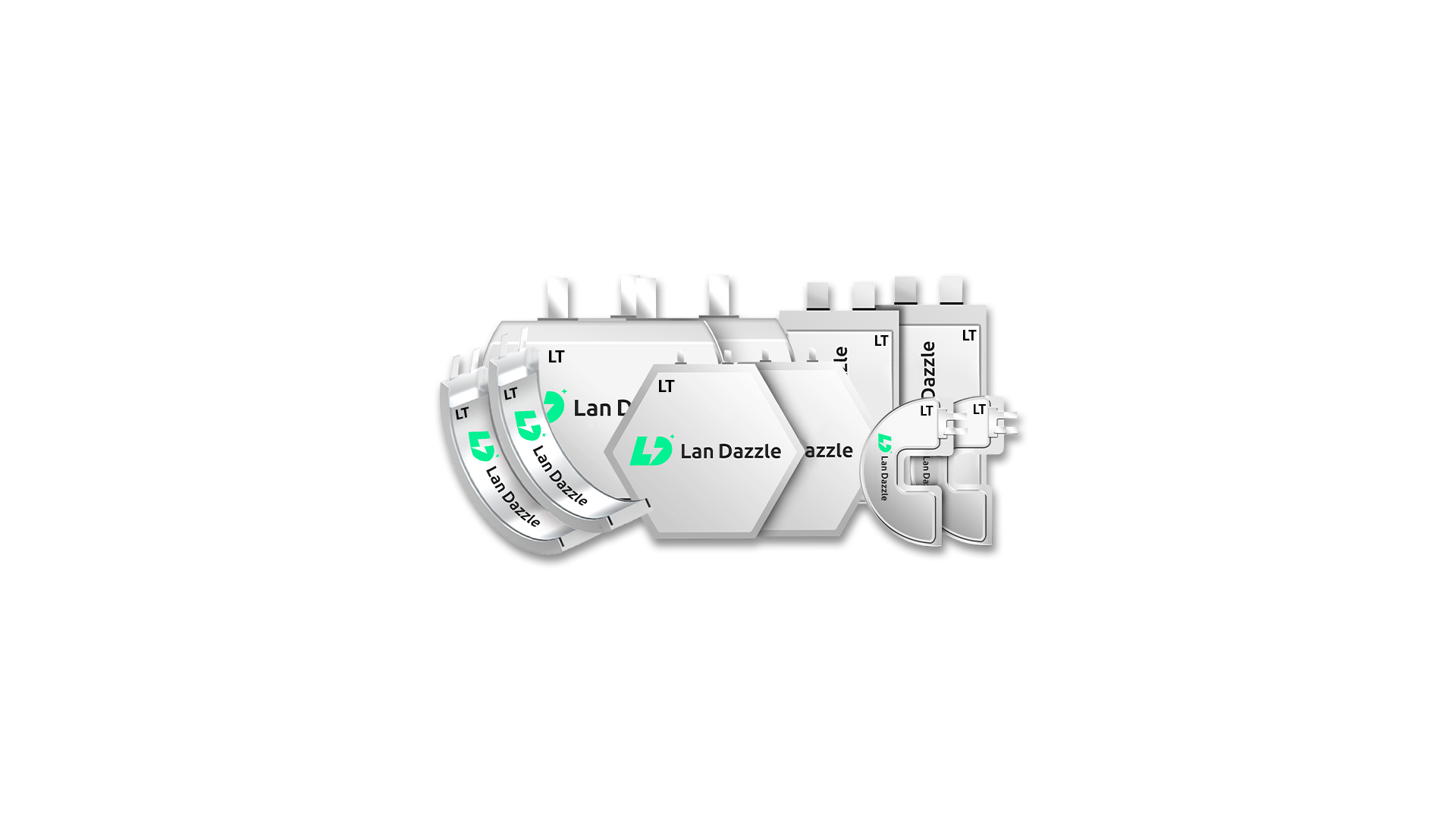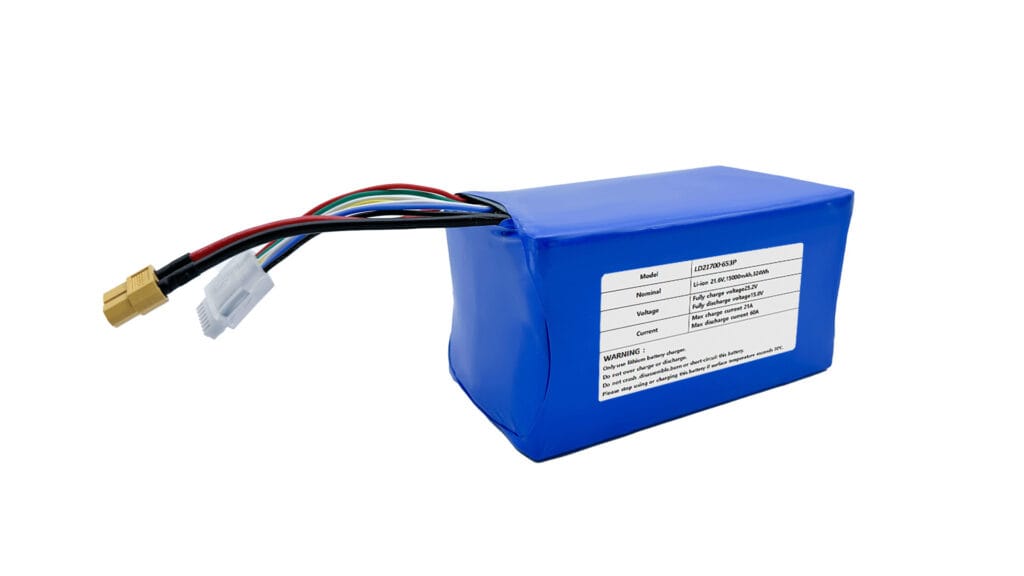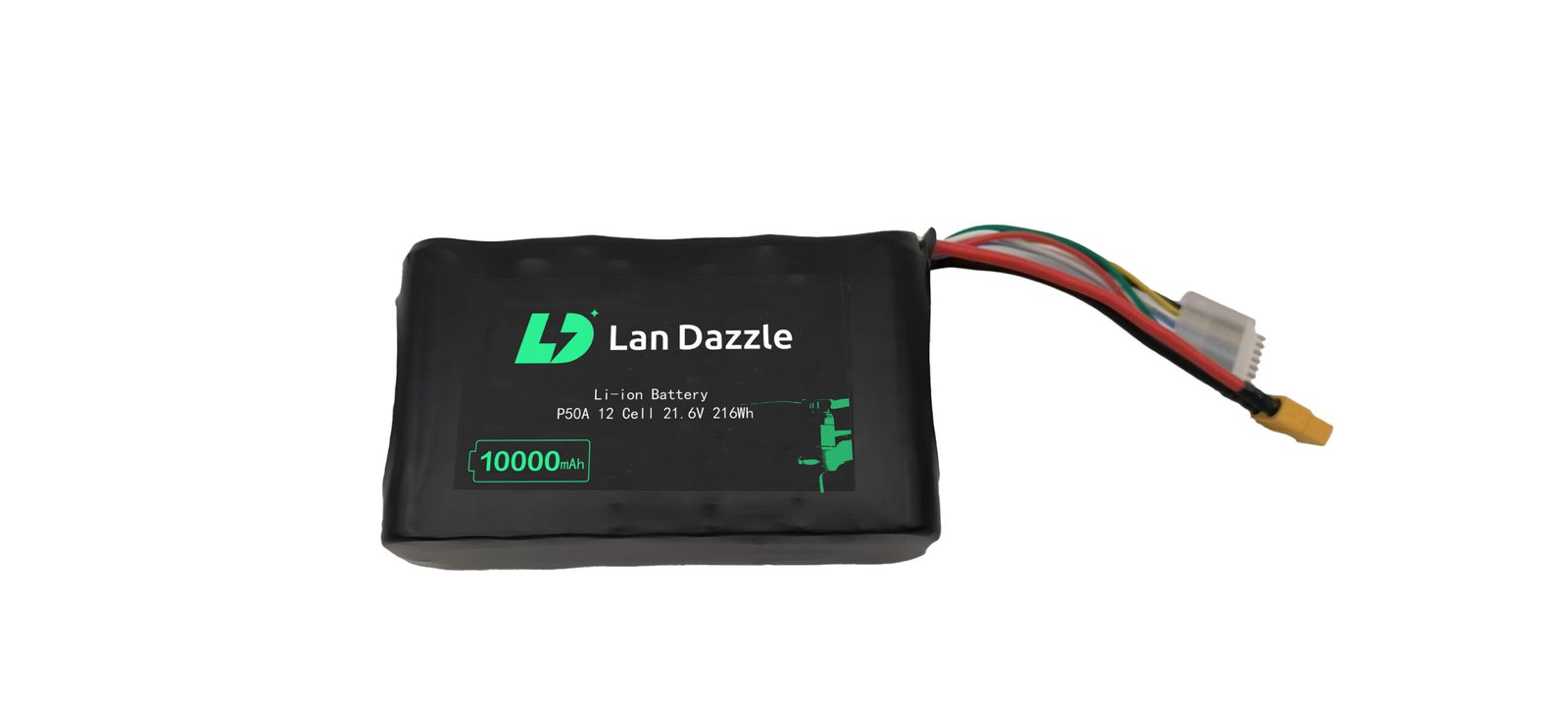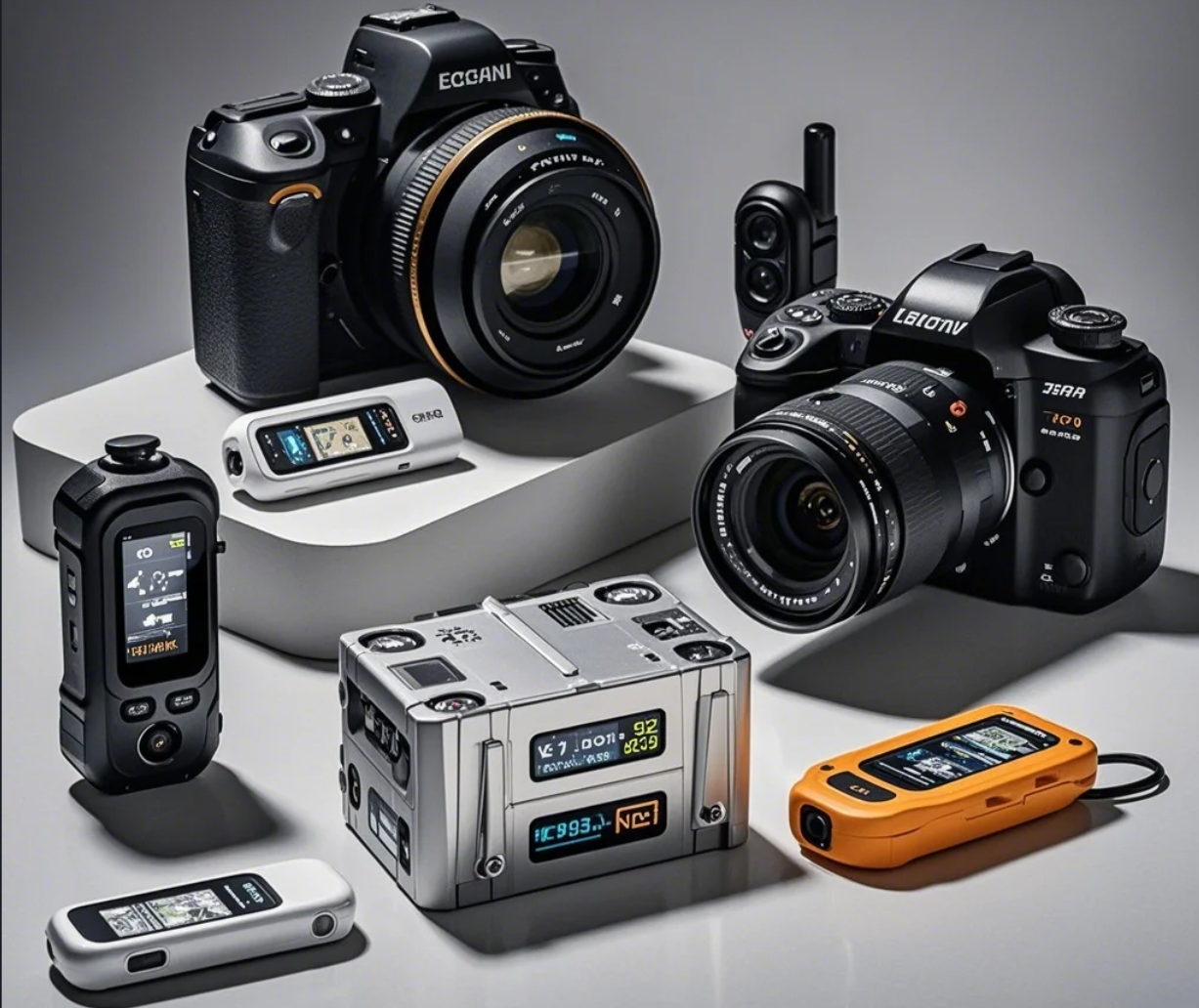Lithium ion or polymer: What are the differences
In the realm of high-performance electronics, energy storage isn’t just a component; it’s often the linchpin determining capability and design potential. From the demanding peak currents required by custom-built quadcopters to the sophisticated battery management systems (BMS) in electric vehicles and the seamless integration enabling wafer-thin mobile devices, rechargeable lithium-based batteries are the undisputed workhorses. While “Lithium-ion” (Li-ion) serves as a broad umbrella term, discerning tech enthusiasts understand the crucial nuances, especially when comparing traditional Li-ion architectures against their Lithium-polymer (LiPo) variants.
This article provides a technically grounded comparison, dissecting the electrochemical principles, critical performance metrics (energy density, power density, cycle life), safety considerations influenced by materials and architecture, form factor implications, and the underlying research trends that differentiate these vital technologies. Understanding these distinctions is key to appreciating design trade-offs, evaluating specifications accurately, and optimizing performance in demanding applications.
Deep Dive: Lithium-Ion (Li-ion) Fundamentals
Lithium-ion technology represents a diverse family of chemistries unified by the principle of reversible lithium ion movement (intercalation/deintercalation) between a positive electrode (cathode) and a negative electrode (anode) during charge and discharge cycles.
Electrochemical Principles & Materials:
The specific voltage, capacity, power output, and lifespan of a Li-ion cell are intrinsically linked to its electrode materials:
- Anode: Graphite remains the dominant anode material due to its electrochemical stability, good capacity (~372 mAh/g theoretical), and well-understood behavior. Significant research, frequently published in materials science journals, focuses on silicon-graphite composites or pure silicon anodes, which offer much higher theoretical capacities (>3000 mAh/g for Si). However, managing the large volumetric expansion (~300%) of silicon during lithiation without causing rapid mechanical degradation and capacity fade remains a primary engineering challenge.
- Cathode: This side offers more chemical diversity. Key examples include:
- Lithium Cobalt Oxide (LCO): High specific energy, historically dominant in consumer electronics, but suffers from higher cost (cobalt) and potential safety/stability concerns.
- Lithium Manganese Oxide (LMO): Offers good power capability and thermal stability with lower cost than LCO, but typically lower capacity and cycle life.
- Lithium Iron Phosphate (LFP): Known for excellent cycle life (>2000-5000 cycles), superior thermal stability, and cobalt-free composition. Its lower nominal voltage (~3.2V vs 3.6-3.7V) and energy density have historically limited it, but improvements are closing the gap, making it popular in EVs and energy storage where longevity and safety are paramount. Its robust olivine crystal structure, often highlighted in materials science findings, contributes significantly to its stability.
- Lithium Nickel Manganese Cobalt Oxide (NMC): Offers a balance of energy, power, and lifespan. Variants like NMC 111, 532, 622, and 811 represent increasing nickel content, boosting energy density but often requiring more sophisticated thermal management and potentially impacting long-term stability – an active area of battery research.
- Lithium Nickel Cobalt Aluminum Oxide (NCA): Similar to high-nickel NMC, offering high specific energy and power, prominently used in some EV applications.
The Liquid Electrolyte System:
A hallmark of conventional Li-ion cells is the liquid electrolyte. This typically comprises lithium salts (most commonly LiPF6) dissolved in a mixture of organic carbonate solvents (e.g., ethylene carbonate – EC, dimethyl carbonate – DMC, ethyl methyl carbonate – EMC). This liquid medium provides high ionic conductivity (typically 5-12 mS/cm at room temperature), crucial for efficient power delivery. However, these solvents possess inherent drawbacks: they are flammable and have limited electrochemical stability windows, potentially decomposing at high voltages or temperatures. Research continually explores electrolyte additives, alternative salts (like LiFSI or LiTFSI), or novel solvent systems aimed at widening the stability window, improving low-temperature performance, and enhancing safety (reducing flammability), as detailed in electrochemical and safety engineering publications.
Common Architectures:
The need for robust containment of the liquid electrolyte and management of internal pressure typically dictates rigid cell formats:
- Cylindrical Cells: Standardized sizes like 18650 (18mm diameter, 65mm length) and the increasingly adopted 21700 (21mm diameter, 70mm length) offer mechanical robustness, ease of manufacturing at scale, and predictable thermal behavior, making them ideal for battery packs in EVs, power tools, medical devices, and energy storage systems (ESS).
- Prismatic Cells: Flat, rectangular cells enclosed in aluminum or steel cans. They offer good packaging efficiency for devices requiring block-shaped batteries and are used in consumer electronics and various EV platforms.
Key Performance Metrics:
Depending on the specific chemistry and design, Li-ion cells deliver high specific energy (practical values often range from 150 Wh/kg for LFP up to ~270+ Wh/kg for high-end NMC/NCA), good power density, and respectable cycle life, making them versatile for numerous applications.

Deep Dive: Lithium-Polymer (LiPo) Specifics
Lithium-polymer signifies a crucial evolution within the Li-ion framework, distinguished primarily by its electrolyte formulation and the architectural freedom this enables.
The Polymer Electrolyte Distinction:
Instead of a free-flowing liquid, LiPo batteries utilize a polymer-based electrolyte. While research actively pursues true solvent-free, solid-polymer electrolytes (SPEs) for potential breakthroughs in safety and energy density, the vast majority of commercial LiPo batteries employ a gel-polymer electrolyte (GPE). In a GPE, standard liquid electrolyte components (solvents and lithium salts) are immobilized within a polymer matrix, often derived from materials like Polyvinylidene fluoride-hexafluoropropylene (PVDF-HFP) or Polyethylene oxide (PEO). This quasi-solid or gel-like state offers key benefits:
- Significantly reduces the risk of electrolyte leakage.
- Eliminates the need for a rigid metal can solely for containment.
- Can potentially improve electrode-electrolyte interface stability in some designs.
However, this comes with trade-offs. The polymer matrix generally impedes ion transport compared to free liquid, resulting in lower ionic conductivity, particularly noticeable at low temperatures. Material science and electrochemistry research focuses on optimizing polymer structures and incorporating additives to enhance conductivity while maintaining mechanical properties.
Pouch Cell Architecture:
The non-liquid nature of the GPE enables the characteristic LiPo pouch cell. The cell components (anode, cathode, separator) are stacked or laminated, saturated with the gel electrolyte, and enclosed within a flexible, heat-sealed pouch, usually made of an aluminum-laminated film. This architecture provides:
- Exceptional Volumetric Efficiency: Minimal volume wasted on casing, allowing more active material in a given space.
- Unmatched Form Factor Flexibility: Cells can be manufactured in extremely thin profiles (<1mm is possible) and custom shapes (rectangular, curved, L-shaped) to perfectly fit device contours.
- Potential Weight Savings: The pouch is significantly lighter than a comparable metal can.
- Associated Challenges: The soft pouch offers minimal protection against physical damage (puncture, impact, crushing), requiring careful handling and integration within the device. Thermal management also requires consideration, as heat dissipation from flat, tightly stacked pouches can be less efficient than from spaced cylindrical cells without specific thermal design features.
Performance Considerations:
LiPo technology is particularly well-suited for applications demanding high discharge rates (high C-ratings). A C-rating indicates the maximum continuous discharge current as a multiple of the cell’s capacity (e.g., a 2000mAh cell rated at 30C can theoretically deliver 2000mA * 30 = 60 Amps). High C-rate LiPo cells achieve this through engineering optimizations like thin electrode coatings, high-conductivity current collectors, and electrolyte formulations tailored to minimize internal resistance (Effective Series Resistance or ESR). This makes them the go-to choice for power-hungry applications like performance drones and RC vehicles, though sustained high-C operation typically accelerates battery degradation.

Key Differences: Lithium ion or Polymer
Let’s dissect the critical technical distinctions influencing performance and application suitability:
1. Electrolyte & Ionic Conductivity:
Liquid (Li-ion) vs. Gel-Polymer (LiPo). Liquids generally boast higher intrinsic ionic conductivity, facilitating better performance, especially at lower temperatures where GPE viscosity increases more sharply, potentially hindering power delivery. Research often quantifies these differences using electrochemical impedance spectroscopy (EIS) across various temperatures. While GPE formulations are improving, this remains a fundamental difference impacting ESR and rate capability under certain conditions.
2. Form Factor & Design Integration:
This is perhaps the most visually apparent difference. Li-ion’s rigid cylindrical/prismatic cells offer standardization and robustness. LiPo’s pouch cells provide unparalleled design freedom, enabling the sleek, thin profiles of modern smartphones, tablets, wearables, and ultra-thin laptops. This flexibility allows designers to maximize battery capacity within non-rectangular device cavities, significantly impacting overall device ergonomics and volumetric energy density.
3. Energy Density (Wh/kg & Wh/L): Nuances Count:
A direct comparison requires specifying chemistry. At the cell level, cutting-edge Li-ion chemistries (e.g., high-nickel NMC) might offer slightly higher gravimetric energy density (Wh/kg) than typical LiPo formulations, with research publications frequently reporting lab-scale cells surpassing 300 Wh/kg. However, LiPo often wins at the pack or device level due to its lightweight pouch packaging and superior volumetric efficiency (Wh/L), especially when fitting custom shapes. For enthusiasts comparing options, evaluating both Wh/kg and Wh/L based on manufacturer datasheets (while considering the chemistry) is crucial.
4. Power Density & C-Rating:
While specific Li-ion cells (e.g., LFP or LMO based) are designed for good power output, LiPo technology dominates the ultra-high C-rate space (>>10C). Competitive drone racing or RC applications often utilize LiPo packs rated at 50C, 75C, or even exceeding 100C, enabling extreme acceleration and maneuverability. Achieving this involves minimizing ESR through cell design, a key focus for manufacturers serving these niche markets. Standard Li-ion cells are typically limited to lower C-ratings (e.g., 1-5C continuous, higher bursts possible).
5. Safety Mechanisms & Failure Modes:
Safety is paramount for all high-energy-density batteries and relies heavily on cell quality and the BMS. Failure modes differ:
- Li-ion (Rigid Case): Prone to thermal runaway triggered by internal shorts (e.g., dendrite growth, manufacturing defects), overcharging, or external heat/damage. Safety features include pressure-activated vents and Positive Temperature Coefficient (PTC) devices or Current Interrupt Devices (CIDs) integrated into the cell cap. Failure can result in energetic venting of flammable electrolytes and potentially fire or explosion if containment fails. Analytical techniques like Accelerating Rate Calorimetry (ARC) are used in research to study thermal stability limits.
- LiPo (Pouch Cell): More susceptible to mechanical damage (puncture). A common failure mode is swelling (‘puffing’) caused by gas generation from electrolyte decomposition at electrode interfaces, often triggered by overcharging, over-discharging below safe limits, excessive heat, or simple aging. Analytical studies identify gases like CO2, CO, H2, and various hydrocarbons (C2H4, CH4). While potentially less explosive initially than a contained rigid cell failure, pouch rupture can still lead to electrolyte leakage and fire. Swollen cells are irrecoverably damaged and hazardous.
6. Cycle Life & Degradation Mechanisms:
Battery lifespan is finite and influenced by numerous factors. Key degradation mechanisms, extensively studied in battery diagnostic literature, include:
- SEI Layer Growth: The Solid Electrolyte Interphase (SEI) layer forms on the anode during initial cycles. While essential for stability, its continued growth over time consumes lithium inventory and increases cell impedance, leading to capacity fade.
- Lithium Plating: Deposition of metallic lithium on the anode surface, typically occurring during fast charging, low temperatures, or overcharging. It reduces capacity and can cause internal shorts, posing a significant safety hazard.
- Electrode Material Degradation: Particle cracking due to mechanical stress during ion insertion/removal, active material dissolution, or structural changes (especially in high-voltage cathodes). Chemistry plays a huge role. LFP-based Li-ion is known for exceptional cycle stability (often thousands of cycles) due to its robust crystal structure. NMC/NCA Li-ion/LiPo offers higher energy but generally degrades faster (500-1500+ cycles typically). High C-rate operation and high temperatures significantly accelerate degradation for all types.
7. Cost Dynamics:
Standardized cylindrical Li-ion cells (18650/21700) benefit from massive economies of scale, often resulting in the lowest cost per Watt-hour, particularly for LFP chemistry. Prismatic Li-ion and LiPo pouch cells, especially custom shapes or high C-rate variants, generally have higher manufacturing costs due to more complex processes and potentially lower production volumes for specific designs. Materials costs (especially cobalt, nickel, lithium) also heavily influence pricing.
Performance Trade-offs: A Tech Enthusiast Perspective
Choosing between Li-ion and LiPo often involves balancing competing priorities:
| Priority | Favors Li-ion (Cylindrical/Prismatic) | Favors LiPo (Pouch Cell) | Considerations |
| Max Energy Density (Wh/kg) | High-Nickel NMC/NCA Chemistries | Competitive due to packaging | Compare specific datasheets; pack vs. cell level |
| Max Volumetric Density (Wh/L) | Good, but shape-limited | Excellent due to form factor | Critical for slim/compact devices |
| Ultra-High Power (C-Rating) | Limited (LFP/LMO offer good power) | Excellent (Specialized designs >100C) | Essential for drones, RC |
| Longest Cycle Life | LFP Chemistry | Depends on chemistry (like Li-ion) | LFP often preferred for high-cycle apps (ESS, EV) |
| Form Factor Flexibility | Low (Standard sizes) | Very High (Thin, custom shapes) | Key enabler for modern mobile designs |
| Mechanical Robustness | High (Rigid metal casing) | Low (Soft pouch, needs protection) | Important for harsh environments (tools) |
| Lowest Cost ($/Wh) | High Volume Standard Cells (esp. LFP) | Generally higher, esp. custom/high-C | Scale and standardization are key factors |
| Low Temp Performance | Generally better (liquid electrolyte) | Can be limited by GPE conductivity | Check specific cell datasheets for temp range |
Application Focus: Matching Tech to Task
The technical strengths of each type dictate their common applications:
- Li-ion Strongholds (Cylindrical/Prismatic):
- Electric Vehicles (EVs): Large packs benefit from the energy density of NMC/NCA or the longevity/safety/cost of LFP in standardized cell formats (21700, prismatic). Thermal management and BMS are highly sophisticated.
- Power Tools: Require high power bursts, durability, and often utilize cost-effective, robust cylindrical cells.
- Grid Energy Storage (ESS): Prioritize cycle life, safety, and cost, making LFP prismatic or cylindrical cells a leading choice.
- Medical Devices: Reliability, established safety records, and specific power profiles often favor well-characterized Li-ion cells.
- LiPo Dominance (Pouch Cells):
- Smartphones, Tablets, Laptops: Driven by the need for maximum capacity in the thinnest possible, often custom-shaped, lightweight packages.
- Wearable Technology: Smartwatches, fitness trackers demand tiny, often non-rectangular, lightweight batteries.
- Drones & High-Performance RC: Require extremely high C-ratings for power combined with minimum weight. High-discharge LiPo packs are essential.
- Portable Power Banks: Trend towards slimmer designs often incorporates LiPo cells.
The Cutting Edge: Future Battery Horizons
The pursuit of better energy storage is relentless. While Li-ion/LiPo dominate, intense research, often highlighted in scientific journals like Nature Energy or Joule, focuses on next-generation technologies:
- Solid-State Batteries (SSB): Aim to replace liquid/gel electrolytes with solid materials (ceramics, polymers, sulfides). Potential advantages include enhanced safety (eliminating flammable liquids), higher theoretical energy density (enabling lithium metal anodes), and potentially longer lifespan. Major hurdles highlighted in review articles and research reports include achieving high ionic conductivity at room temperature, maintaining stable electrode/electrolyte interfaces (lowering interfacial resistance), and developing scalable, cost-effective manufacturing processes.
- Advanced Li-ion/LiPo Chemistries: Incremental improvements continue, including:
- Silicon Anodes: Pursuing higher capacity while mitigating expansion issues.
- High-Nickel/Low-Cobalt or Cobalt-Free Cathodes: Balancing energy density with cost and ethical sourcing concerns.
- Advanced Electrolyte Formulations: Additives to improve SEI stability, high-voltage tolerance, and safety.
- Beyond Lithium: Long-term research explores alternatives like Sodium-ion (potentially lower cost using abundant sodium), Magnesium-ion, or Lithium-Sulfur (very high theoretical energy density but faces stability/lifespan challenges) for specific applications or resource diversification.
Conclusion: Application Dictates Optimization
For the tech enthusiast, understanding the Li-ion vs. LiPo distinction goes beyond simple labels. It’s about recognizing that LiPo is a specialized branch of Li-ion technology, differentiated primarily by its gel-polymer electrolyte and flexible pouch cell architecture. Traditional Li-ion, typically in rigid casings, offers robustness, standardization, and often cost benefits, excelling with chemistries like LFP for longevity or high-nickel NMC/NCA for pure energy density. LiPo leverages its unique construction for unparalleled form factor flexibility, enabling the slim, lightweight devices we rely on, and pushing the boundaries of power delivery for niche applications like high-performance drones.
Neither is universally superior; the “better” battery is the one optimized for the specific demands of the task – balancing the intricate trade-offs between energy, power, lifespan, safety, form factor, and cost. As innovation driven by intense research continues, the landscape of energy storage will keep evolving, demanding ongoing technical understanding from those who push the limits of technology.
For more information about lithium ion or polymer, feel free to visit our website at landazzle.com or contact us directly at info@landazzle.com.





